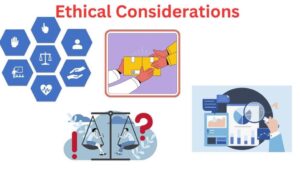Introduction:
In the dynamic world of technology, staying up-to-date with the latest news is crucial for any tech blogger. With innovations happening at a breakneck pace, finding reliable and timely news can make or break your blog’s credibility and relevance. This guide will delve into various strategies and tools to help you source news effectively for your tech blog.
Understanding Your Audience:
Identifying Your Niche:
Before you start sourcing news, it’s essential to understand your blog’s niche. Are you focusing on consumer electronics, software development, artificial intelligence, cybersecurity, or another tech sector? Knowing your niche helps you target the right sources and ensure that the news you share resonates with your audience.

Analyzing Audience Interests:
Use analytics tools to understand what type of content your readers engage with the most. Google Analytics, for instance, can provide insights into which articles are most popular, how long readers stay on your site, and what topics drive the most traffic.
Reliable news sources;
Major Tech News Websites:
Some websites are considered pillars of tech journalism and are excellent sources of reliable news. Websites like:
TechCrunch is known for breaking news on startups and tech companies.
The Verge covers a wide range of technology news, including gadgets, software, and trends.
Wired offers in-depth analysis and investigative journalism on technology, culture, and science.
CNET: Focuses on consumer electronics reviews and news.
Ars Technica provides comprehensive coverage of tech policy, science, and IT.
Industry-Specific Publications
Depending on your niche, industry-specific publications can be invaluable. For instance:
AI and Machine Learning: Websites like AI News, VentureBeat AI, and MIT Technology Review.
Cybersecurity: Sources like Krebs on Security, Dark Reading, and Threatpost.
Software Development: Sites like DevOps.com, InfoQ, and The Register.
Aggregator Websites:
News aggregators compile news from various sources, saving you time and effort. Some useful aggregaters include:
Feedly is a customizable news aggregator that allows you to follow specific blogs, websites, and keywords.
Flipboard: Compiles news stories from a variety of sources based on your interests.
Utilizing social media:
Twitter is a real-time news platform that can be incredibly valuable for tech bloggers. Follow industry leaders, journalists, and companies for the latest updates.

LinkedIn:
LinkedIn is not just for networking; it’s also a great platform for finding industry news. Join tech-focused groups and follow company pages to stay updated on the latest developments and insights from professionals in your field.
Reddit:
Reddit is a treasure trove of information with numerous tech-focused subreddits such as r/technology, r/gadgets, and r/programming. These communities often share news, insights, and discussions on the latest tech trends.
Tech influencers and news channels on YouTube often provide detailed reviews, analyses, and news updates. Channels like Marques Brownlee (MKBHD), Linus Tech Tips, and Unbox Therapy are popular for their tech content.
Networking and Events:
Industry Conferences and Events:
Attending industry conferences and events is a great way to stay ahead of the curve. Events like CES, SXSW, and TechCrunch Disrupt provide firsthand access to new product launches, trends, and networking opportunities with industry leaders.

Webinars and online seminars:
With the rise of virtual events, webinars and online seminars have become accessible sources of expert insights. Websites like Eventbrite and Meetup often list relevant events.
Networking:
Engage with fellow bloggers, journalists, and industry professionals on social media, in forums, and at events. This network can provide insider information and tips on upcoming news.
Press Releases and Company Blogs:
Press Releases
Many tech companies publish press releases for product launches, updates, and corporate news. Websites like PR Newswire and Business Wire aggregate press releases from various companies.

Company Blogs:
Companies often share detailed posts on their blogs about new products, features, and industry insights. Following blogs from companies relevant to your niche, such as Google, Microsoft, Apple, and Amazon, can provide valuable content for your blog.
Research Tools and Techniques:
Google Alerts:
Set up Google Alerts for specific keywords related to your niche. This tool will notify you whenever new content is published online, ensuring you never miss important news.
RSS Feeds:
RSS feeds are a powerful way to aggregate news from multiple sources. Many news websites and blogs offer RSS feeds, which you can follow using an RSS reader like Feedly or Inoreader.
Newsletters:
Subscribe to newsletters from reputable tech news websites and industry experts. Newsletters often curate the most important news, saving you time and effort. Some popular tech newsletters include The Download by MIT Technology Review, Morning Brew’s Emerging Tech, and Benedict Evans’ newsletter.
Content Curation Strategies:
Daily News Roundups:
Consider creating daily or weekly news roundups to keep your audience informed about the latest developments. This format not only provides value to your readers but also encourages regular visits to your blog.

In-Depth Analysis:
Go beyond just reporting the news by offering in-depth analysis and commentary. Explain the implications of a new technology, trend, or product launch, and provide your unique perspective.
Guest posts and interviews
Featuring guest posts and interviews with industry experts can provide fresh insights and attract a broader audience. Reach out to professionals in your network or those you admire for their opinions on recent developments.
Ethical Considerations:
Fact-Checking
Ensure that the news you share is accurate and comes from credible sources. Fact-checking is essential to maintaining your blog’s credibility and trustworthiness. Use multiple sources to verify information before publishing.

Transparency:
Be transparent about your sources and provide proper attribution. If you’re using information from other blogs or news sites, give credit where it’s due. This practice not only respects intellectual property but also builds trust with your audience.
Avoiding Clickbait:
Resist the temptation to use clickbait headlines. While they might generate short-term traffic, they can damage your reputation in the long run. Aim for headlines that are accurate, clear, and informative.
Conclusion:
Sourcing news for your tech blog requires a strategic approach and the use of diverse tools and platforms. By understanding your audience, leveraging reliable sources, utilizing social media, and participating in industry events, you can stay ahead of the curve. Incorporate research tools like Google Alerts and RSS feeds and focus on ethical considerations to maintain credibility. Ultimately, combining timely news with insightful analysis will keep your blog relevant and valuable to your readers. Embrace these strategies to ensure your tech blog remains a go-to source for the latest in technology.

